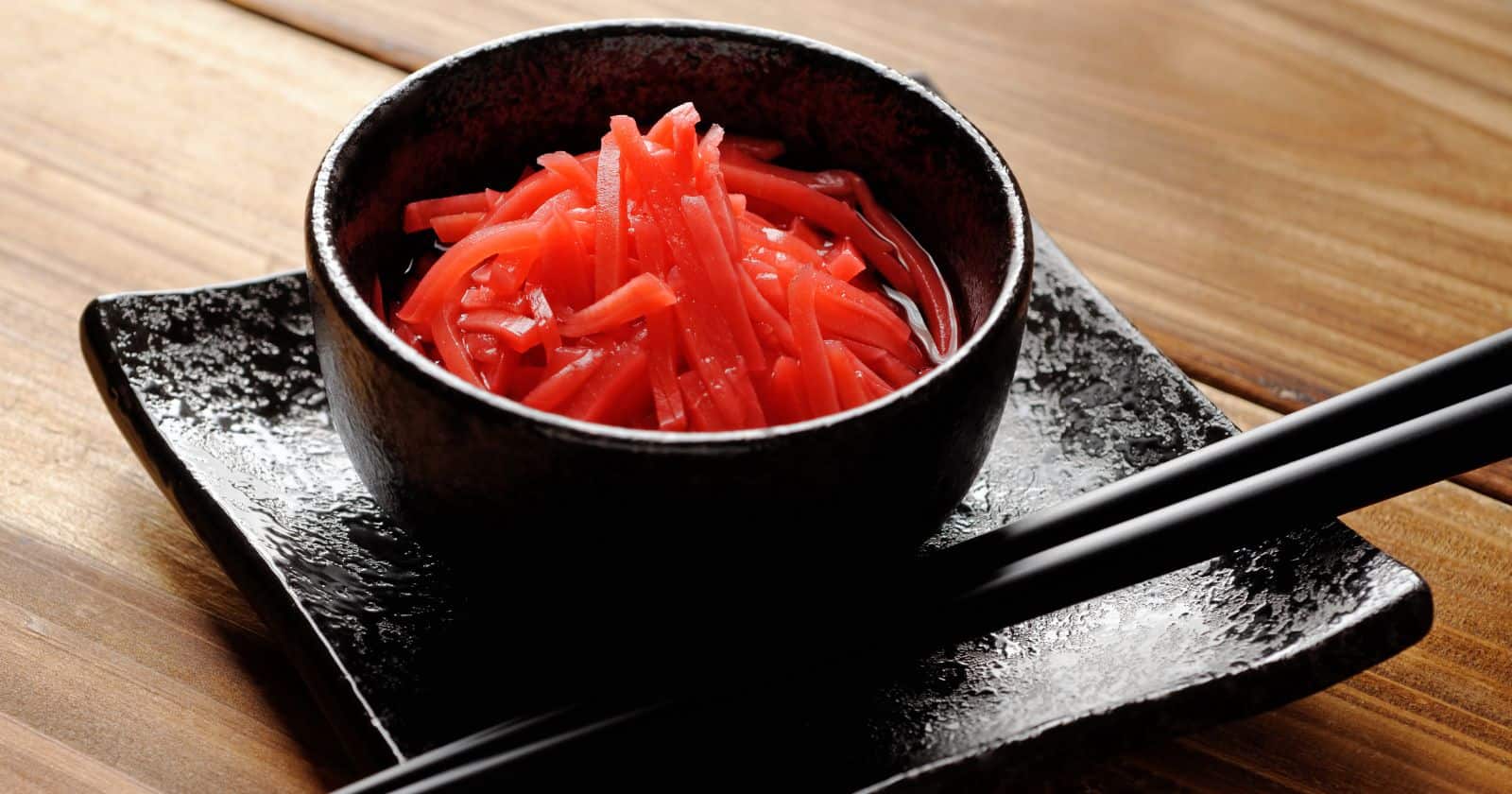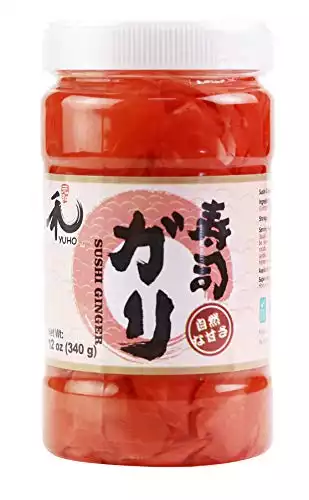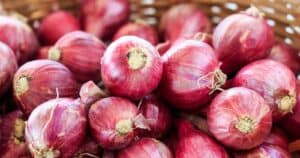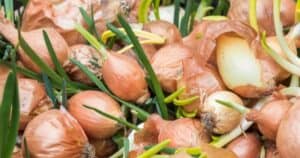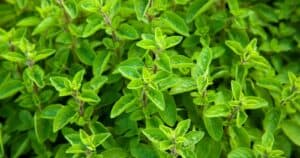For food lovers worldwide, Japanese cuisine offers many flavors and textures for the taste buds – from sushi to miso soup.
And one of the unique condiments that makes those flavors pop is Beni Shoga – red pickled ginger.
To get you started on the path to deliciousness, we’ve created this comprehensive step-by-step guide on how to make Beni Shoga.
You’ll learn what ingredients are needed for this tasty Japanese condiment and tips on finely slicing or shredding the ginger (which is crucial!).
We even give you detailed instructions on how to prepare your pickling solution according to your desired sweetness level and guidance when it comes time for pickling the ginger so it can rest and become properly flavored!
Last but not least, we discuss essential tips you should know when it comes time to store and use your Beni Shoga like a pro — from best practices like refillable jars, all away creative ideas such as making sushi garnishes out of it.
So go ahead and dive into our unique guide about Beni Shoga – you won’t regret it!
What is Beni Shoga?
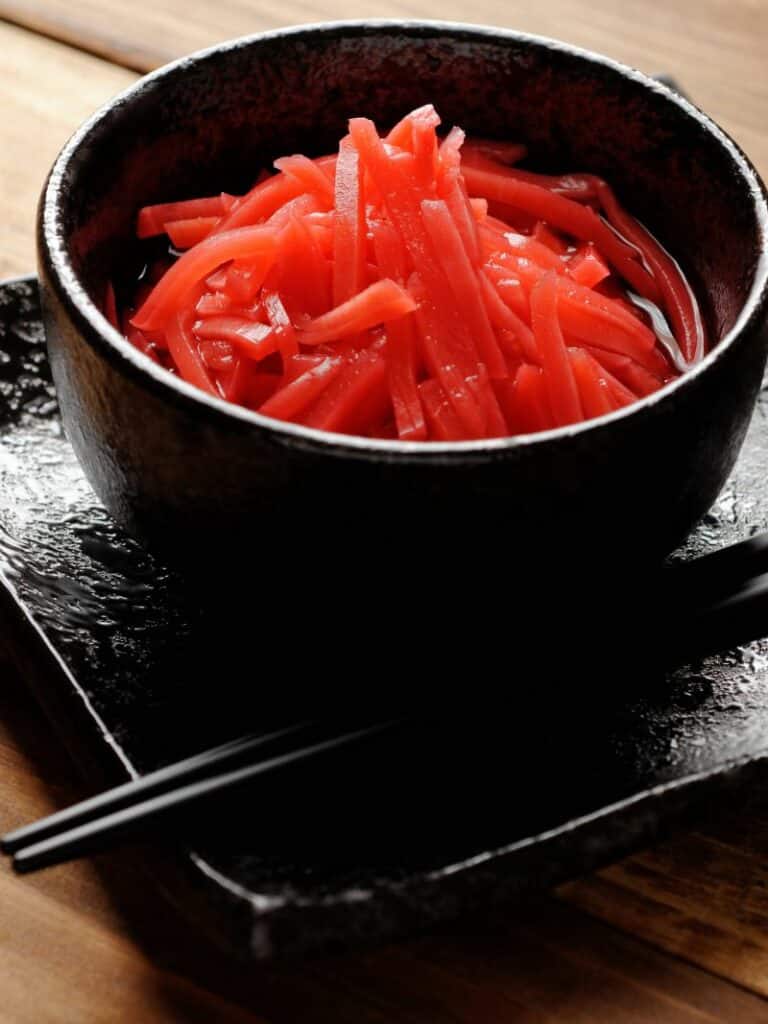
Beni shoga is one of the most recognizable condiments in Japanese cuisine. It’s a vibrant reddish pink pickled ginger that has been pickled in plum vinegar (umeshu), a byproduct of making pickled plums (umeboshi).
You may also see it being referred to as “gari” or “beni shoga.” Gari is pickled sushi ginger used as a palate cleanser, while beni shoga is another variety of pickled ginger.
Beni shoga can be eaten independently, but it also goes very well with many other dishes, including Japanese and Western cuisine.
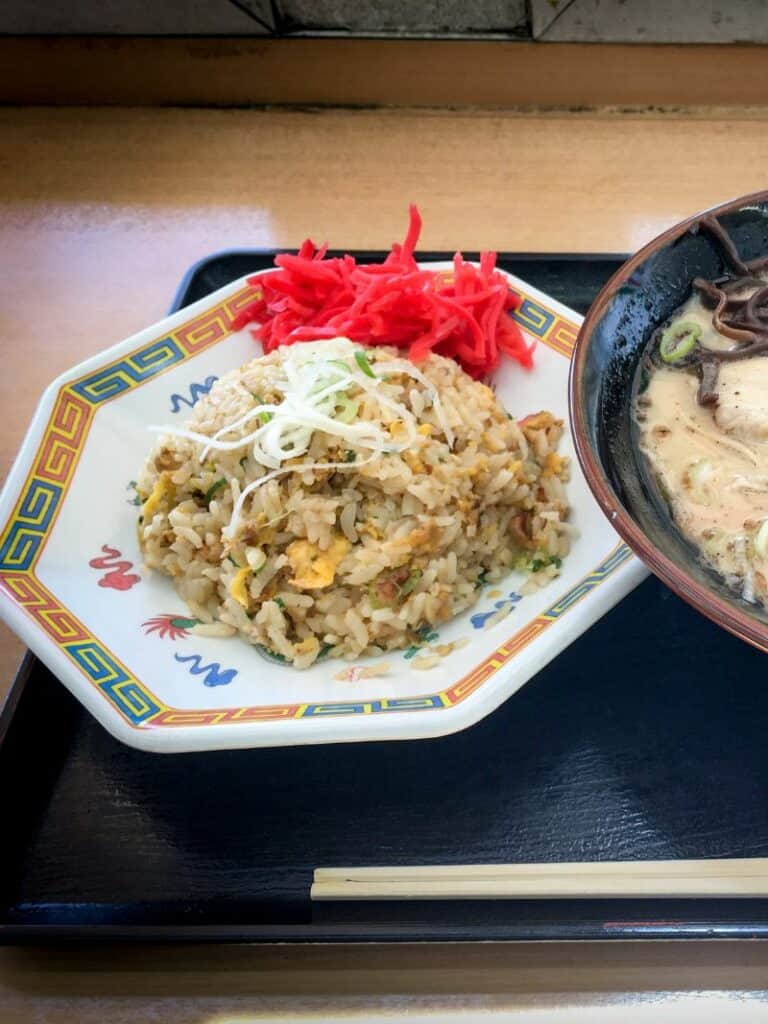
This makes beni shoga an incredibly versatile condiment that can add flavor to any meal.
It’s often used as a topping for rice dishes such as donburi and gyudon, and it’s also commonly served alongside grilled meats like yakitori and teriyaki chicken.
Beni shoga can even be added to salads or sandwiches for an extra kick of flavor!
Preparing The Ginger For Beni Shoga
Beni shoga is a type of pickled ginger that is used in many Japanese dishes. It’s made from fresh ginger root, which must be cut into thin slices or shredded before being pickled.
If you are preparing beni shoga for the first time, it’s important to read the cooking tips before jumping to the recipe.
The most common way of slicing and shredding ginger is with a mandoline slicer or food processor.
You can also use a sharp knife to cut the ginger into thin slices or shreds. However, this method requires more skill and patience as you must be careful not to cut yourself while slicing the ginger root.
Once you have sliced or shredded your ginger, you can make beni shoga by adding plum vinegar.
How to Make Beni Shoga At Home
How To Make Beni Shoga At Home
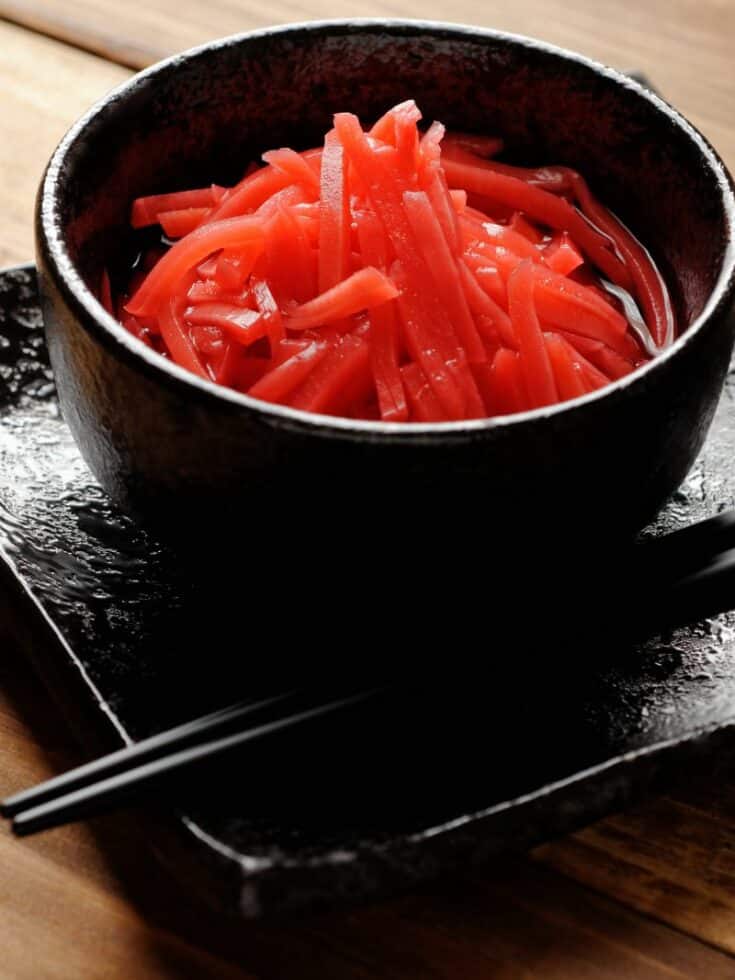
Beni Shoga is a traditional Japanese condiment made from pickled ginger that has been cut into thin strips or shredded and then pickled in umezu, which is a byproduct of making pickled plums.
It is known for its tangy and sweet flavor and is often used as a topping for Japanese dishes such as okonomiyaki, yakisoba, and takoyaki.
The bright red color of beni shoga comes from red perilla leaves that are added during the pickling process.
You can adjusted the amount of ginger and plum vinegar to suit your need.
Ingredients
- 2 cups young ginger
- 1/4 cup plum vinegar (umezu)
Instructions
- Rinse the young ginger and remove any rough spots or blemishes.
- Using a mandoline slicer or sharp knife, julienne the ginger into thin strips.
- In a bowl, mix the julienned ginger and plum vinegar together until the ginger is well coated.
- Transfer the ginger and vinegar mixture to a jar with an airtight lid.
- Place the jar in a cool and dark place, such as a pantry or cupboard.
- Allow the ginger to pickle for at least one week, or up to one month for a stronger flavor.
- Once the Beni Shoga is ready, it can be stored in the refrigerator for up to six months.
Notes
The taste of beni shoga will become more settled in two days but the longer you're stored the more better taste (less spicy and more sweet).
If you find the flavor of the Beni Shoga too tart, you can add a small amount of sugar or honey to balance the flavors to your taste.
The color of ginger will become pink and then red after pickled. Also, you can add red food coloring to give the ginger a vibrant red color, but this is optional.
How Long To Wait And What To Expect?
After making Beni Shoga, it’s important to wait for at least one week for the ginger to pickle and develop its full flavor.
During this time, the ginger will absorb the flavors of the pickling solution and become soft and tender.
Once the pickling process is complete, the Beni Shoga will have a bright red color and a tangy, sweet flavor with a slight crunch.
It’s important to note that the longer you leave the ginger to pickle, the softer and more flavorful it will become.
Some people prefer to wait up to two months for the ginger to fully mature in the pickling solution.
When you are ready to use the Beni Shoga, simply remove the desired amount from the pickling liquid and give it a quick rinse under cold water to remove any excess salt or vinegar.
Then, use it as a condiment for your favorite dishes such as rice bowls, ramen, or noodle soups.
Substitutes for Beni Shoga
Beni shoga is a traditional Japanese condiment that is used to add flavor and tanginess to many dishes. If you can’t find or don’t want to use beni shoga, there are some substitutes that you can try.
Pickled ginger
Regular pickled ginger or sushi ginger can be used as a substitute for beni shoga. These are readily available in most grocery stores and have a similar sweet and tangy flavor to beni shoga.
Fresh ginger
Grated fresh ginger mixed with soy sauce and sugar can be a good substitute for beni shoga. The flavor will be more intense than pickled ginger, but it still adds a delicious kick to any dish.
Red radish or daikon
If you want to make your own pickled condiment at home, try using grated red radish or daikon instead of ginger.
Mix it with vinegar and sugar for a similar sweet and sour taste.
Keep in mind that these substitutes may not provide the exact same taste as beni shoga, but they still add a unique flavor to your dishes!
Where to Buy Beni Shoga?
Beni shoga is typically found in Asian grocery stores, especially Japanese specialty stores. It is usually sold in plastic bags or containers and kept refrigerated.
Some supermarkets may also carry it in their international or Asian food sections. If you’re unable to find it in stores, you can also order it online from various retailers that specialize in Japanese food products.
Other Tsukemono You Should Try
Tsukemono is a traditional Japanese pickled vegetable that is commonly served as a side dish to a meal or used as a garnish.
They come in various flavors and textures, ranging from sweet to sour, crispy to crunchy.
If you enjoy beni shoga, here are some other tsukemono you should try:
Shiozuke
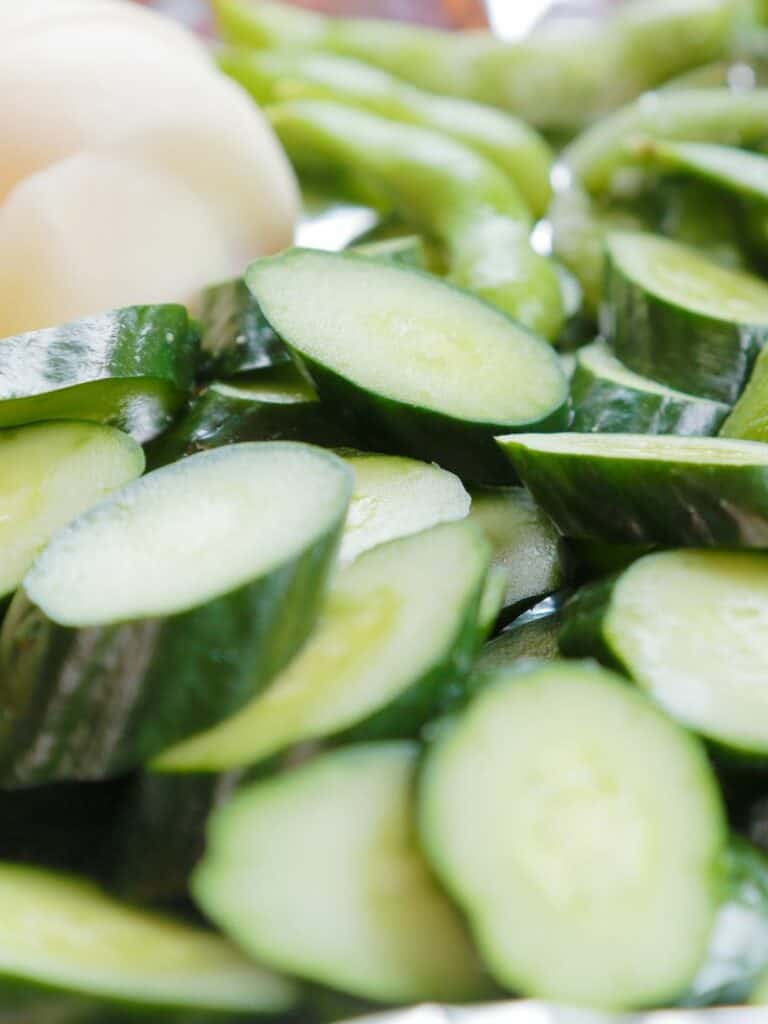
These are vegetables that have been pickled in salt, and they are often served alongside rice and miso soup. Popular shiozuke vegetables include cucumbers, daikon radish, and eggplant.
Umeboshi
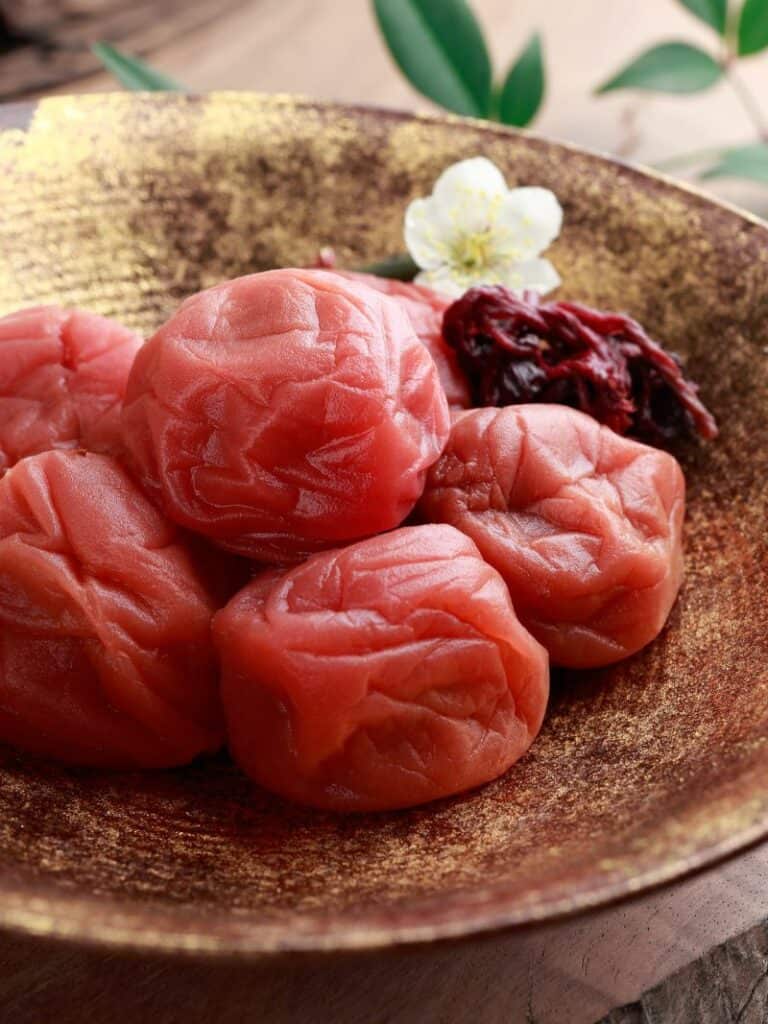
These are pickled Japanese plums that have a sour, salty, and slightly sweet flavor. Umeboshi are often used in onigiri (rice balls) or as a garnish for rice dishes.
Takuan
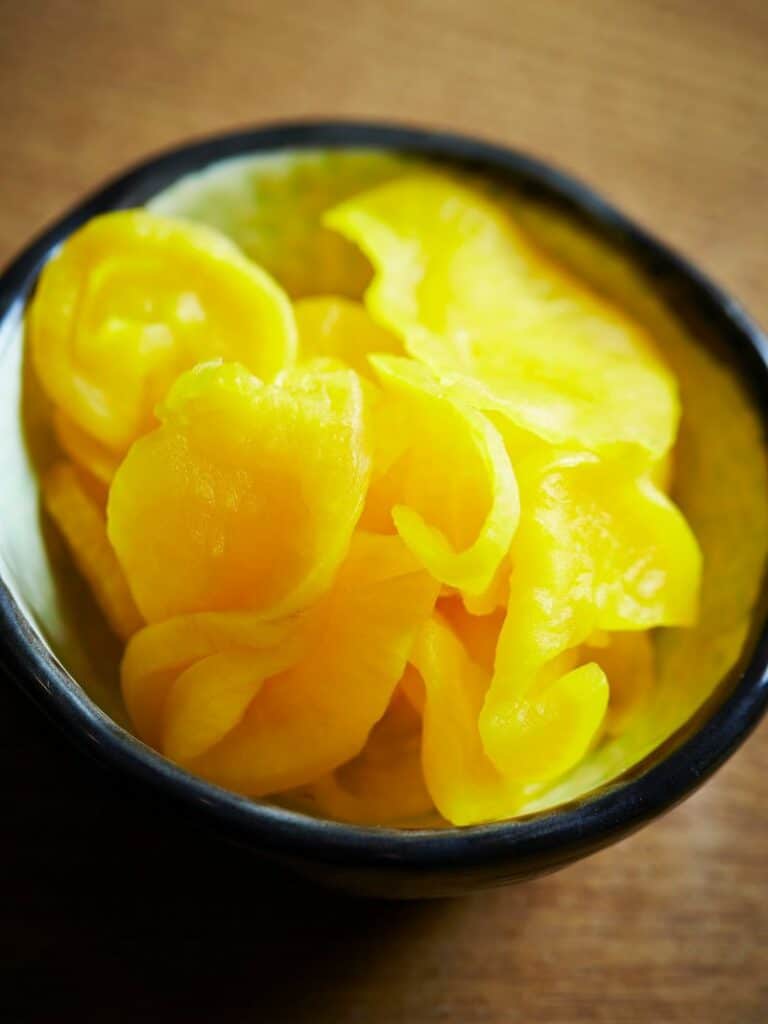
These are pickled daikon radish slices that have been cured in rice bran. They have a distinctive yellow color and a crunchy texture.
Asazuke
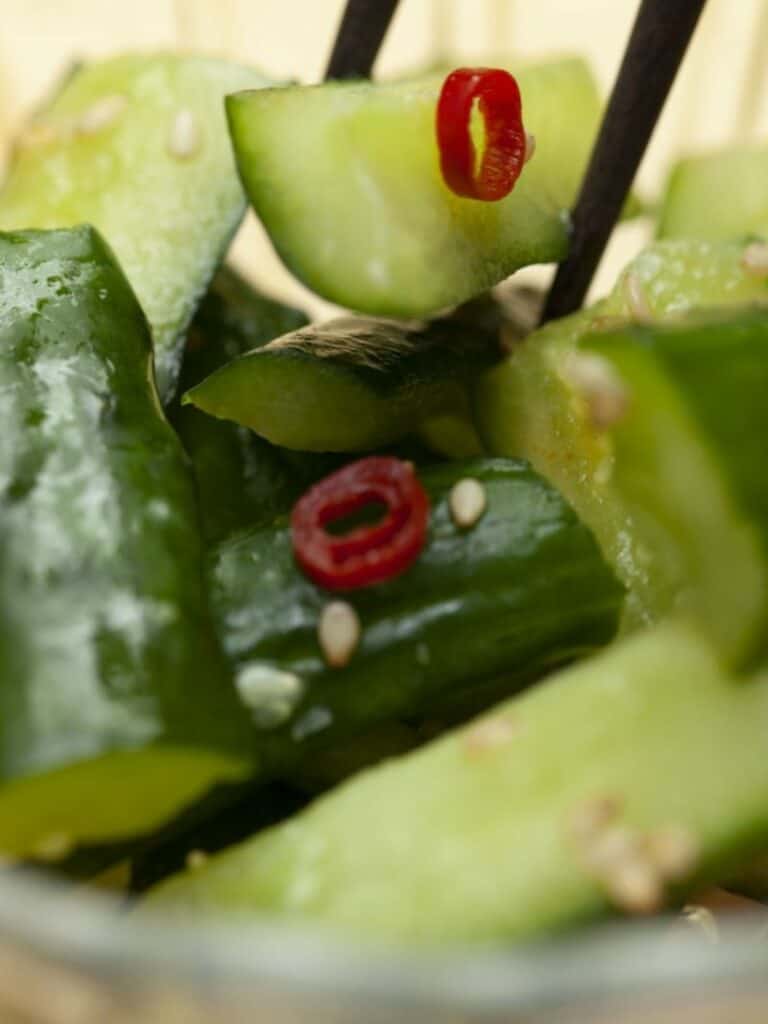
These are lightly pickled vegetables marinated in a mixture of soy sauce, vinegar, and sugar. Asazuke vegetables can include cucumber, carrot, and radish.
Gari
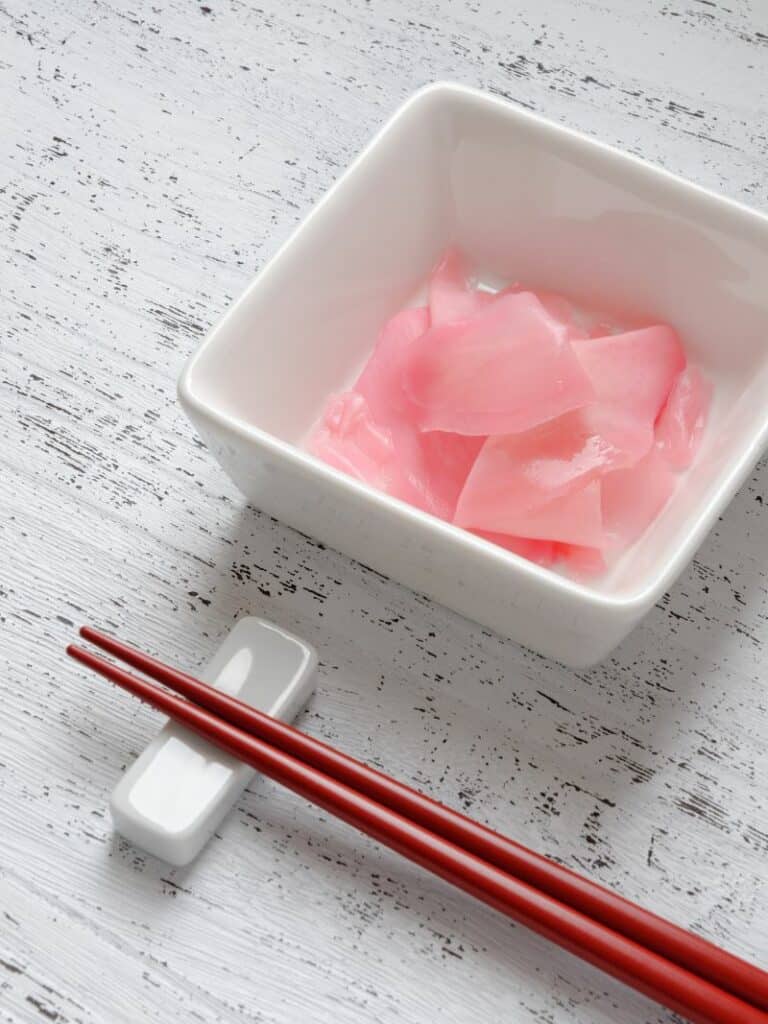
This is pickled ginger that is often served with sushi. It has a sweet and sour flavor that is a great palate cleanser between bites of sushi.
These are just a few examples of the many types of tsukemono you can find in Japanese cuisine. They are a great way to add flavor and texture to your meals and are also packed with nutrients!

